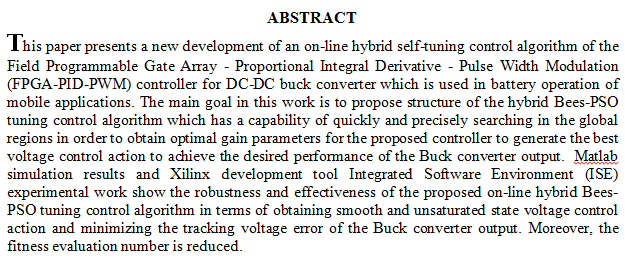
Conducted Althilelat chemical models of crude oil back to the reservoir Fertile from the fields of Baghdad and Kut and models of crude oil back to the reservoir ??????? of Haklbe Tikrit and Baghdad were calculated their properties Alvezaúah Kalkthaqh and weight, quality and degree of August j (API) and know the quality Nfothma that was light or heavy and make the comparison between Alinvtin also conducted chemical analyzes of the two models of Almia associated with each of the oil above Almkmnin and measured Ktvthma and Zojithma and concentrations of some dissolved salts in them and clarify the relationship between the oil reservoir and water associated with oil fields...
Background: Suppression of quorum sensing (QS) that regulates many virulence factors, including antimicrobial resistance, in bacteria may subject the pathogenic microbes to the harmful consequences of the antibiotics, increasing their susceptibility to such drugs. Aim: The current study aimed to make an aqueous crude extract from the soil Proteus mirabilis isolate with the use of the gas chromatography-mass spectrometry (GC-MS) technique for its analysis, and then, study the impact of the extract on clinical isolates of Pseudomonas aeruginosa. Methods: Preparation of crude extracts from P. mirabilis (both organic and aqueous), which were then analyzed by GC-MS to detect the bioactive ingredients. Furthermore, the extract’s capability to i
... Show MorePurpose Heavy metals are toxic pollutants released into the environment as a result of different industrial activities. Biosorption of heavy metals from aqueous solutions is a new technology for the treatment of industrial wastewater. The aim of the present research is to highlight the basic biosorption theory to heavy metal removal. Materials and methods Heterogeneous cultures mostly dried anaerobic bacteria, yeast (fungi), and protozoa were used as low-cost material to remove metallic cations Pb(II), Cr(III), and Cd(II) from synthetic wastewater. Competitive biosorption of these metals was studied. Results The main biosorption mechanisms were complexation and physical adsorption onto natural active functional groups. It is observed that
... Show More (51)
(51)
This study deals with the elimination of methyl orange (MO) from an aqueous solution by utilizing the 3D electroFenton process in a batch reactor with an anode of porous graphite and a cathode of copper foam in the presence of granular activated carbon (GAC) as a third pole, besides, employing response surface methodology (RSM) in combination with Box-Behnk Design (BBD) for studying the effects of operational conditions, such as current density (3–8 mA/cm2), electrolysis time (10–20 min), and the amount of GAC (1–3 g) on the removal efficiency beside to their interaction. The model was veiled since the value of R2 was high (>0.98) and the current density had the greatest influence on the response. The best removal efficiency (MO Re%)
... Show More (2)
(2)
 (1)
(1)
The effects of nutrients and physical conditions on phytase production were investigated with a recently isolated strain of Aspergillus tubingensis SKA under solid state fermentation on wheat bran. The nutrient factors investigated included carbon source, nitrogen source, phosphate source and concentration, metal ions (salts) and the physical parameters investigated included inoculum size, pH, temperature and fermentation duration. Our investigations revealed that optimal productivity of phytase was achieved using wheat bran supplemented with: 1.5% glucose. 0.5% (NH4)2SO4, 0.1% sodium phytate. Additionally, optimal physical conditions were 1 × 105 spore/g substrate, initial pH of 5.0, temperature of fermentation 30˚C and fermentation dura
... Show More (7)
(7)
European Chemical Bulletin (ISSN 2063-5346) is a peer-reviewed journal that publishes original research papers, short communications, and review articles in all areas of chemistry. European Chemical Bulletin has eight sections, namely
Greywater is a possible water source that can be improved for meeting the quality required for irrigation. Treatment of greywater can range from uncomplicated coarse filtration to advanced biological treatment. This article presents a simple design of a small scale greywater treatment plant, which is a series of physical and natural processes including screening, aeration, sedimentation, and filtration using granular activated carbon filter and differentiates its performance with sand filter. The performance of these units with the dual filter media of (activated carbon with sand) in treatment of greywater from Iraqi house in Baghdad city during 2019 and that collected from several points including washbasins, kitchen si
... Show More (1)
(1)
Series of new complexes of the type [M2 (L)Cl4 ] are prepared from the new ligand[N1 ,N4 -bis(benzo[d]thiazol-2- yl)succinamide (L) derived from ethan-1,2-dicarbonyl chloride and 2-aminobenzothiozole,where, M= Ni(ii), Cu(ii) and Zn(ii) alsocomplexes of mix-ligands, the type [M(L)(8-HQ)]Cl, where, M = Ni(ii), Cu(ii) and Zn(ii),8-HQ= 8-Hydroxyquinoline. Chemical forms are obtained from their 1 H, 13CNMR, Mass spectra (for (L)), FT-IR and U.V spectrum, melting point, molar conduct.Using flame (AA), % M is determined in the complexes.The content of C, H, N and S in the (L) and its complexes was specified. Magnetic susceptibility and thermal analysis (TGA) of prepared compounds were measured.The propose geometry for all complexes[M2 (L)Cl4 ] wa
... Show MoreOne of the most difficult tasks in modern medical societies is the process of identifying a cure for many infectious diseases caused by drug-resistant microbes. Therefore, it has become necessary to discover new compounds that work in this regard. The currently prepared Schiff base, derived from thiazole, has a biological activity against bacteria and biofilms and its activity increases when it is associated with copper, zinc and platinum ions and forms metal complexes. This study highlights the synthesis and evaluation of novel biological compounds as inhibitors of bacterial growth and biofilms. A three newly complexes are resulting from the reaction of a new Schiff base ligand (LC) with metal ions (Zn, Cu, Pt). The new ligand (LC)
... Show More